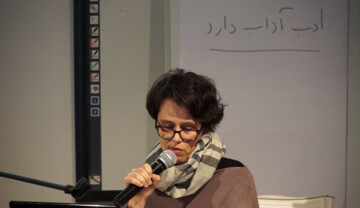By the end of the Middle Ages madness replaced leprosy as an ilness that existed on the margins of society (Foucault). Sebastian Brandt' book Stultifera Navis (Ship of Fools) from 1494 is widely recognized as a symbol of this process. The Ship of Fools wandered the waterways of Europe, and the madmen travelled on a ship to some other world(s). Madness also fascinated because it was a different kind of (forbidden) knowledge that was related to the end of the world. Foucault described the ship as heterotopia: an inventive space, a ‘reservoir of imagination’. In the 18th century when ideas based on reason became the primary source of legitimacy madness was locked away from the rest of the world. In the so called “great confinement” process society created a space in which criminals, poor and mad were locked up and excluded. They were closed into a kind of total institution. Modern museums were also established in the time of Enlightenment.
After the second world war the treating of madness was put under scrutiny and the antipsychiatry movements appeared in France, UK, Brazil and Italy. But it was not until 1978 when a law 180 was adapted in Italy that finally closed down the psychiatric asylums. However, the antipsychiatry movement was not only a movement aiming at closing down the psychiatric - or total - institutions; it was at the same time also a “critique of power knowledge” as well as power relations. The events in Italy had a strong influence on group of students and professors of social work in Slovenia that would later on in 1988 called themselves The Committee for the Social Protection of Madness.
The 1980s in Slovenia were times of new radical ideas when the political, social and cultural norms were not taken for granted anymore aiming at the changing the overall socio-political landscape. The main protagonist of the creation of “new forms of sociality” (Tomaž Mastnak) was a civil society. In comparison to other Eastern European countries, the concept of civil society in Slovenia came from significantly different starting points: not from dissidentism and the position of “civil society against the state”, but rather it mainly represented a connection between different and new social movements (peace movement, ecological movement, LGBT, etc.), and the creation of institutional structures which were not merely in “opposition” to the existing ones.
In the 1980s the antpsychiatry movement attempted, through radical education of psychiatric profession, to change society’s relationship towards madness, the psychiatrists’ relationship towards the patient, and the hierarchical relationships themselves in psychiatric institutions in Slovenia, leaning in the process on the ideas of David Cooper, Félix Guattari and Franco Basaglia among others. Madness, The Committee wrote, was one of the creative principles and a driving force, and should be protected as such. It was not by chance that Ship of Fools was one of the symbols of the movement in Slovenia, as well as an artistic happening on the Ljubljanica river organized by the same Committee in 1989. The happening attempted to symbolicaly bring madness back to the city from which it was once expeled. The slogan was: “what we do not see it does not exist”.
However, it was not until recently that a link between this movement, art institutions and their constituent practices had been deliberated. The exhibition Politicization of Friendship in Moderna galerija (+MSUM) in 2014 connected different subjectivities; artistic and activist, and the people from the antipsychiatry movement. The idea was to find some commons points between the movement and dezinstitutionalizations processes and changes that have been recently taking place withing art institutions.



